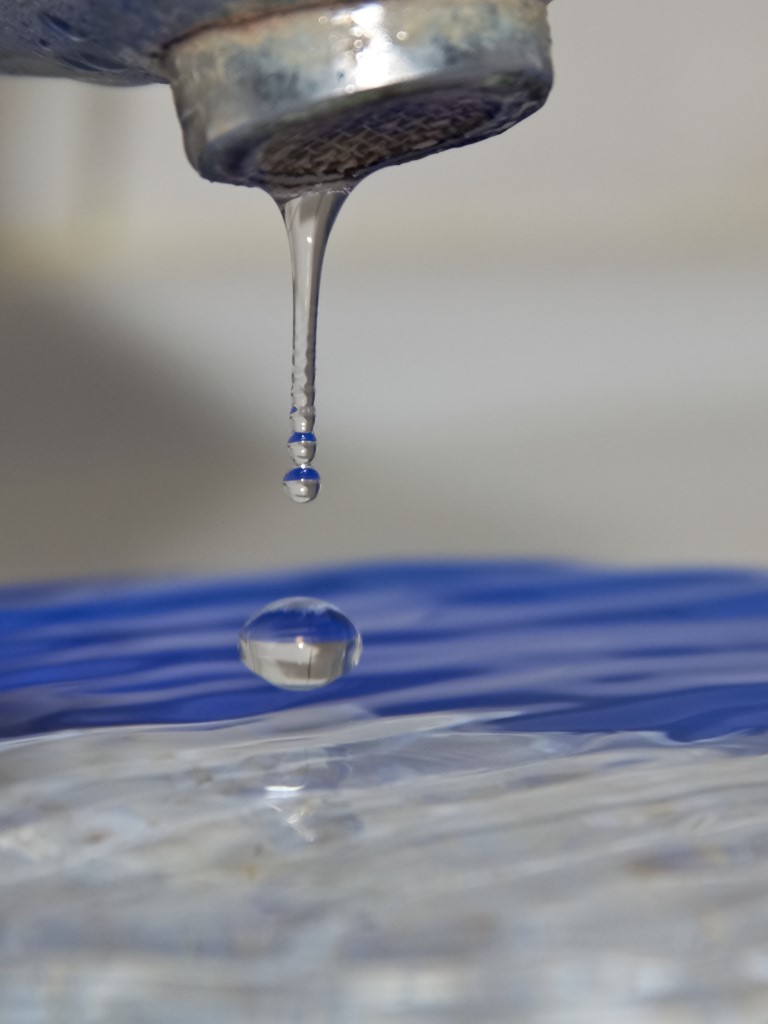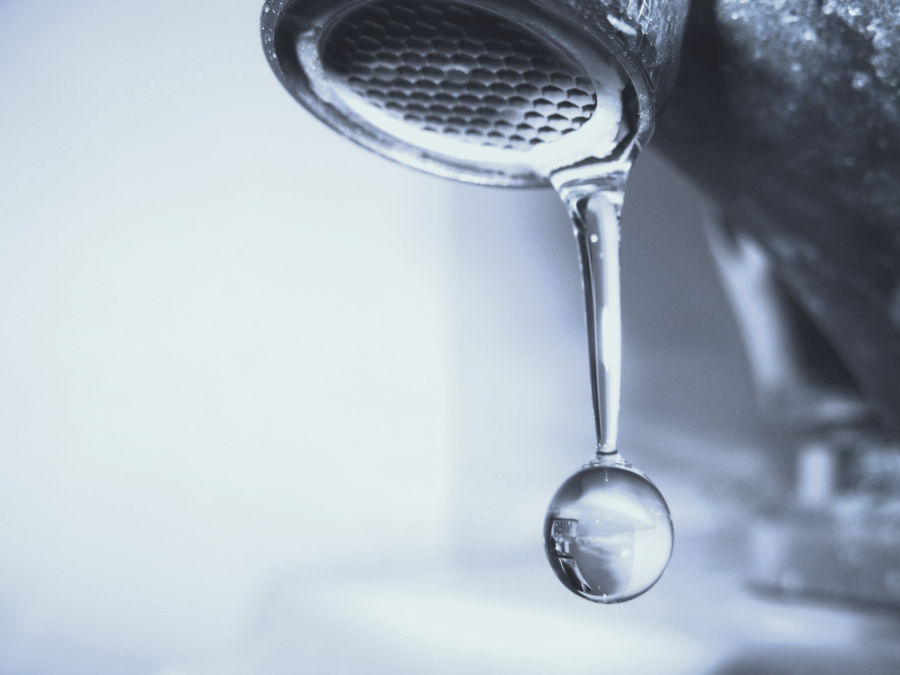When multiple faucets are turned on, water pressure drops due to an increase in demand on the water supply. This can be caused by a variety of factors such as clogged aerators, mineral buildup, or corroded pipes.
To fix low water pressure in your home, it’s important to identify the root cause of the issue. In some cases, it may be necessary to call a plumber to adjust the water pressure regulator or clear blockages in the plumbing system.
However, simple fixes like cleaning faucet heads or removing clogs from aerators can also restore adequate water flow. By addressing low water pressure, you can improve the functionality and efficiency of your plumbing system.

Credit: www.aceplumbing.com
Identifying The Issue
When you turn on more than one faucet and notice a drop in water pressure, it’s essential to identify the issue promptly. Understanding the symptoms of pressure drop and dispelling common misconceptions can help you pinpoint the root cause of the problem.
Symptoms Of Pressure Drop
Recognizing the symptoms of water pressure drop when multiple faucets are in use is crucial for identifying the underlying issue. Common signs include:
- Significant decrease in water flow from all faucets
- Fluctuating water pressure when multiple faucets are on
- Difficulty in maintaining consistent water temperature
Common Misconceptions
Addressing common misconceptions can aid in accurately diagnosing the cause of water pressure drops:
- Misconception: Low pressure is only due to a single faucet issue.
- Misconception: Fluctuating pressure is a normal occurrence.
- Misconception: Water pressure issues do not require immediate attention.

Credit: www.reddit.com
Initial Checks
When you experience water pressure drops when more than one faucet is on, there are a few initial checks you can perform to identify and potentially resolve the issue. These checks can help you pinpoint the cause of the water pressure drop, allowing you to take appropriate action to restore optimal water flow throughout your plumbing system.
Inspecting Faucet Aerators
One of the first things to examine when dealing with reduced water pressure in multiple faucets is the condition of the faucet aerators. Over time, aerators can become clogged with mineral deposits and debris, leading to diminished water flow. By removing and cleaning the aerators, you may be able to restore proper water pressure to the affected faucets. This simple maintenance task can often make a significant difference in water flow and pressure.
Evaluating Water Meter Valve
Another crucial step in addressing water pressure drops is to evaluate the water meter valve. A partially closed or obstructed meter valve can restrict the flow of water into your home, causing decreased pressure when multiple faucets are in use. Ensuring that the water meter valve is fully open and unobstructed can help alleviate pressure issues and restore consistent water flow throughout your plumbing system.
Pressure Regulator Troubleshooting
Experiencing a drop in water pressure when multiple faucets are in use could indicate a problem with the pressure regulator. This issue may arise from a malfunctioning regulator or mineral buildup in the pipes. Contact a plumber to inspect and possibly adjust the water pressure regulator for a solution.
If you’ve ever experienced a drop in water pressure when multiple faucets are on, it could be a sign of a pressure regulator issue. The pressure regulator is an essential component of your plumbing system that helps maintain a consistent water pressure throughout your home. When it malfunctions, it can result in low water pressure and a frustrating experience. In this section, we will discuss the signs of regulator failure and how to perform a DIY pressure test to troubleshoot the issue.Signs Of Regulator Failure
There are several signs that indicate your pressure regulator may be failing. It’s important to recognize these signs early on to prevent further damage to your plumbing system. Here are some common indicators of regulator failure: 1. Fluctuating water pressure: If you notice that the water pressure in your home is inconsistent, with it varying from high to low, it could be a sign of a faulty pressure regulator. 2. Reduced water flow: When the pressure regulator is not functioning correctly, it can restrict the water flow, resulting in reduced water pressure at your faucets and fixtures. 3. Water hammering noises: If you hear loud banging or knocking sounds when you turn on or off your faucets, it could be due to a malfunctioning pressure regulator. 4. Leaking pressure relief valve: A leaking pressure relief valve is a clear indication of a pressure regulator problem. This valve is designed to release excess pressure from the system, and if it’s constantly leaking, it could mean that the regulator is not regulating the pressure properly.Diy Pressure Testing
Before calling a professional plumber, you can perform a simple pressure test to determine if the pressure regulator is the culprit behind the drop in water pressure. Here’s how you can do it: 1. Turn off all faucets and fixtures in your home to ensure no water is flowing. 2. Locate the pressure regulator, which is usually near the main water supply valve or the water meter. 3. Attach a pressure gauge to a hose bib or faucet closest to the pressure regulator. Make sure the gauge is securely attached. 4. Slowly turn on the main water supply valve and observe the pressure reading on the gauge. It should ideally be between 40-60 psi (pounds per square inch). 5. If the pressure reading is significantly lower than the recommended range or fluctuates, it indicates a problem with the pressure regulator. 6. If you suspect a faulty pressure regulator, it’s best to consult a professional plumber to diagnose and repair the issue. By recognizing the signs of regulator failure and conducting a DIY pressure test, you can troubleshoot the drop in water pressure when more than one faucet is on. Addressing the issue promptly will help maintain a consistent water pressure throughout your home and ensure a smooth functioning plumbing system.Plumbing System Inspection
When you experience a water pressure drop when more than one faucet is on, it’s important to conduct a thorough plumbing system inspection to identify and resolve any underlying issues. This inspection involves detecting pipe clogs and assessing corrosion and buildup, which are common culprits for decreased water pressure.
Detecting Pipe Clogs
Pipe clogs can significantly impact water flow and result in reduced water pressure. To detect pipe clogs, follow these steps:
- Inspect the faucet heads: Remove the aerators and check for any debris or mineral buildup. Clean them thoroughly and reinstall.
- Check supply lines: Remove the supply lines and inspect them for any clogs or blockages. If found, clean or replace the lines accordingly.
- Inspect the bucket: Place a bucket under the faucet and run the water. If the water flow is weak or inconsistent, it may indicate a clog further down the line.
- Call a professional plumber: If you suspect a severe pipe clog, it’s best to seek the expertise of a professional plumber who can use specialized tools to locate and remove the obstruction.
Assessing Corrosion And Buildup
Corrosion and buildup within your plumbing system can restrict water flow and lead to decreased water pressure. To assess corrosion and buildup, consider the following:
- Inspect visible pipes: Check for any signs of corrosion on visible pipes, such as discoloration, rust, or leaks. If corrosion is present, it may be necessary to replace the affected pipes.
- Consider pipe age: Older pipes are more prone to corrosion and buildup. If your plumbing system consists of aging pipes, it might be beneficial to have them inspected by a professional for potential issues.
- Water quality test: Conduct a water quality test to determine if mineral buildup is a contributing factor to the reduced water pressure. If necessary, install a water softener or filtration system to prevent further buildup.
By thoroughly inspecting your plumbing system for pipe clogs, corrosion, and buildup, you can identify the root causes of the water pressure drop when multiple faucets are on. Taking prompt action to address these issues will help restore optimal water flow throughout your home.
Water Demand Management
To manage water demand and prevent pressure drops when multiple faucets are in use, consider inspecting for clogs in the aerators. Clogged aerators can lead to reduced water pressure in individual faucets. Regular cleaning and maintenance can help restore adequate water flow and pressure to fixtures throughout the home.
Water Demand Management Balancing Fixture Use One of the main reasons for water pressure drops when more than one faucet is on is the unbalanced use of fixtures. For instance, if someone is taking a shower while another person is using the washing machine, the water pressure will drop significantly. To avoid this, it is essential to balance the fixture use throughout the day. Upgrading Plumbing for Better Flow Another effective way to manage water demand is by upgrading the plumbing system for better flow. Old and corroded pipes can restrict the water flow, leading to low water pressure when multiple fixtures are in use. Installing larger pipes and upgrading the water meter can improve the water flow and reduce pressure drops. Flow Restrictors Flow restrictors can also help manage water demand and reduce pressure drops. These devices regulate the water flow by restricting the amount of water that comes out of the faucet. This not only helps conserve water but also ensures that there is enough water pressure for all fixtures. Conclusion Managing water demand is crucial to avoid pressure drops when multiple faucets are in use. Balancing fixture use, upgrading plumbing systems, and installing flow restrictors can help ensure adequate water pressure and improve water efficiency.Pressure Tank Problems
When more than one faucet is on, a common issue is a drop in water pressure, often due to pressure tank problems. This can be caused by issues with the pressure switch or a buildup in the pipes. It’s best to have a plumber test and adjust the water pressure regulator to address fluctuating water pressure.
If you’ve ever experienced a drop in water pressure when more than one faucet is on, then you know how frustrating it can be. One of the most common causes of this problem is pressure tank issues. The pressure tank plays a crucial role in maintaining consistent water pressure throughout your home. When the tank is not functioning properly, you may experience a drop in pressure or even no water at all. In this post, we will discuss some of the most common pressure tank problems and how to fix them.Pressure Switch Issues
One of the most common pressure tank problems is a malfunctioning pressure switch. The pressure switch is responsible for turning the pump on and off as needed to maintain a consistent water pressure. If the pressure switch is not working correctly, you may experience a drop in water pressure or even no water at all. To fix this issue, you may need to replace the pressure switch.Routine Tank Maintenance
Routine tank maintenance is essential to prevent pressure tank problems. Over time, sediment and minerals can build up inside the tank, causing it to become less efficient. This buildup can also cause damage to the tank and its components. To prevent these issues, it is essential to perform routine tank maintenance. This includes flushing the tank regularly and checking the pressure levels. If you are experiencing a drop in water pressure when more than one faucet is on, pressure tank problems may be the cause. By understanding the most common pressure tank problems and how to fix them, you can ensure that your home’s water pressure remains consistent and reliable.Professional Intervention
If you notice a drop in water pressure when multiple faucets are on, it may be time to call in a professional intervention. A plumber can assess and fix any issues with your water pressure regulator or clogged aerators to restore adequate water flow to your fixtures.
Say goodbye to low water pressure with expert help.
When To Call A Plumber
If you’re experiencing a water pressure drop when more than one faucet is on, it may be time to seek professional intervention. While there are some DIY solutions you can try, such as cleaning faucet heads or removing clogs, a plumber can provide a thorough assessment and fix any underlying issues.
Here are some signs that indicate it’s time to call a plumber:
- Consistently low water pressure in multiple faucets
- Water pressure drops only when multiple faucets are on
- Fluctuating water pressure throughout the day
Calling a plumber ensures that the problem is accurately diagnosed and resolved, saving you time and effort in the long run.
Costs And Considerations
Before calling a plumber, it’s important to consider the costs involved. The exact cost will depend on the complexity of the issue and the plumber’s rates. It’s a good idea to get multiple quotes from different plumbers to compare prices.
Additionally, keep in mind that there may be additional costs if any parts need to be replaced or if the issue requires extensive repairs. Discuss these potential costs with the plumber beforehand to avoid any surprises.
Remember, investing in professional intervention can save you from further damage and ensure a long-lasting solution to your water pressure problem.
Long-term Solutions
One possible solution to address water pressure drops when more than one faucet is on is to install a water pressure booster pump. This long-term fix can increase water pressure throughout the house and ensure a consistent flow of water.
It is important to consult a professional plumber to determine the right type of pump for your specific needs and to ensure proper installation.
System Upgrades
If you are experiencing water pressure drops when more than one faucet is on, you may need to consider long-term solutions such as system upgrades. These upgrades can help improve water flow and pressure throughout your home, ensuring that you have adequate water supply whenever multiple faucets are in use. One possible system upgrade is to install a water pressure booster pump. This device can help increase the water pressure in your plumbing system, providing a consistent and strong flow of water even when multiple faucets are running simultaneously. The booster pump works by increasing the water pressure in the main supply line, ensuring that each faucet receives sufficient water pressure. Another option for system upgrades is to replace old or outdated plumbing pipes. Over time, pipes can become corroded or clogged, leading to a decrease in water pressure. By replacing these pipes with new ones, you can ensure that water flows smoothly and efficiently throughout your home, even when multiple faucets are being used.Preventive Practices
In addition to system upgrades, there are also preventive practices that can help maintain optimal water pressure in your home. These practices can help prevent pressure drops and ensure a consistent flow of water. Regular maintenance and cleaning of faucet aerators is one preventive practice that can help improve water pressure. Over time, aerators can become clogged with mineral deposits or debris, leading to reduced water flow. By removing and cleaning the aerators regularly, you can prevent blockages and maintain adequate water pressure in each faucet. Another preventive practice is to check for any leaks in your plumbing system. Even small leaks can lead to a decrease in water pressure, as water may be diverted away from the faucets. By regularly inspecting your plumbing system and repairing any leaks, you can ensure that water pressure remains consistent throughout your home. Additionally, it is important to be mindful of your water usage habits. Avoid running multiple high-demand appliances, such as dishwashers and washing machines, at the same time as using multiple faucets. This can help prevent excessive strain on your plumbing system and maintain optimal water pressure. By implementing these long-term solutions, including system upgrades and preventive practices, you can address water pressure drops when more than one faucet is on. These measures will not only improve water flow and pressure in your home but also ensure a hassle-free and efficient water supply for all your needs.
Credit: ranshaw.com
Frequently Asked Questions
How Do I Fix Fluctuating Water Pressure?
The best solution for fixing fluctuating water pressure is to call a plumber to test and adjust your water pressure regulator. Another reason for low water pressure upstairs could be buildup in pipes. If the issue is with just one faucet, it could be due to clogged aerators, which can be easily cleaned by removing and cleaning thoroughly.
Why Would Water Pressure Drop In Only One Faucet?
The water pressure may drop in only one faucet due to a clogged or dirty aerator. Cleaning the aerator can help restore adequate water flow.
Why Does Half Of My House Have Low Water Pressure?
Low water pressure in half of your house could be due to a clogged aerator or mineral buildup in the pipes. Cleaning the aerator or addressing pipe buildup may resolve the issue. Consider consulting a plumber for further evaluation and adjustments to the water pressure regulator.
Why Do I Lose Water Pressure Then It Comes Back?
Water pressure may drop if multiple faucets are used simultaneously, but it should return when usage decreases. This could be due to the limited capacity of your plumbing system to supply water to all faucets at once. Consider consulting a plumber to check and adjust your water pressure regulator.
Why Does The Water Pressure Drop When Multiple Faucets Are On?
The drop in water pressure occurs when the demand exceeds the supply capacity, leading to reduced pressure at each faucet.
Conclusion
Experiencing a drop in water pressure when more than one faucet is on can be a common issue in households. This can be caused by various factors such as clogged aerators, mineral buildup in pipes, or a malfunctioning pressure switch.
It is important to address this issue promptly to ensure adequate water flow throughout your home. Consider consulting a professional plumber to identify and resolve the root cause of the problem. By doing so, you can restore optimal water pressure and enjoy a consistent water flow in your faucets.





